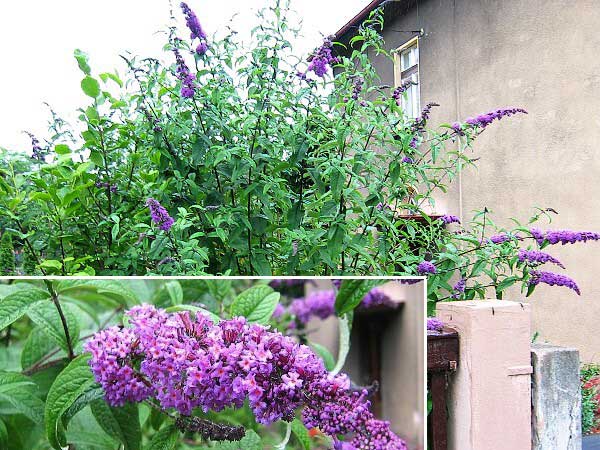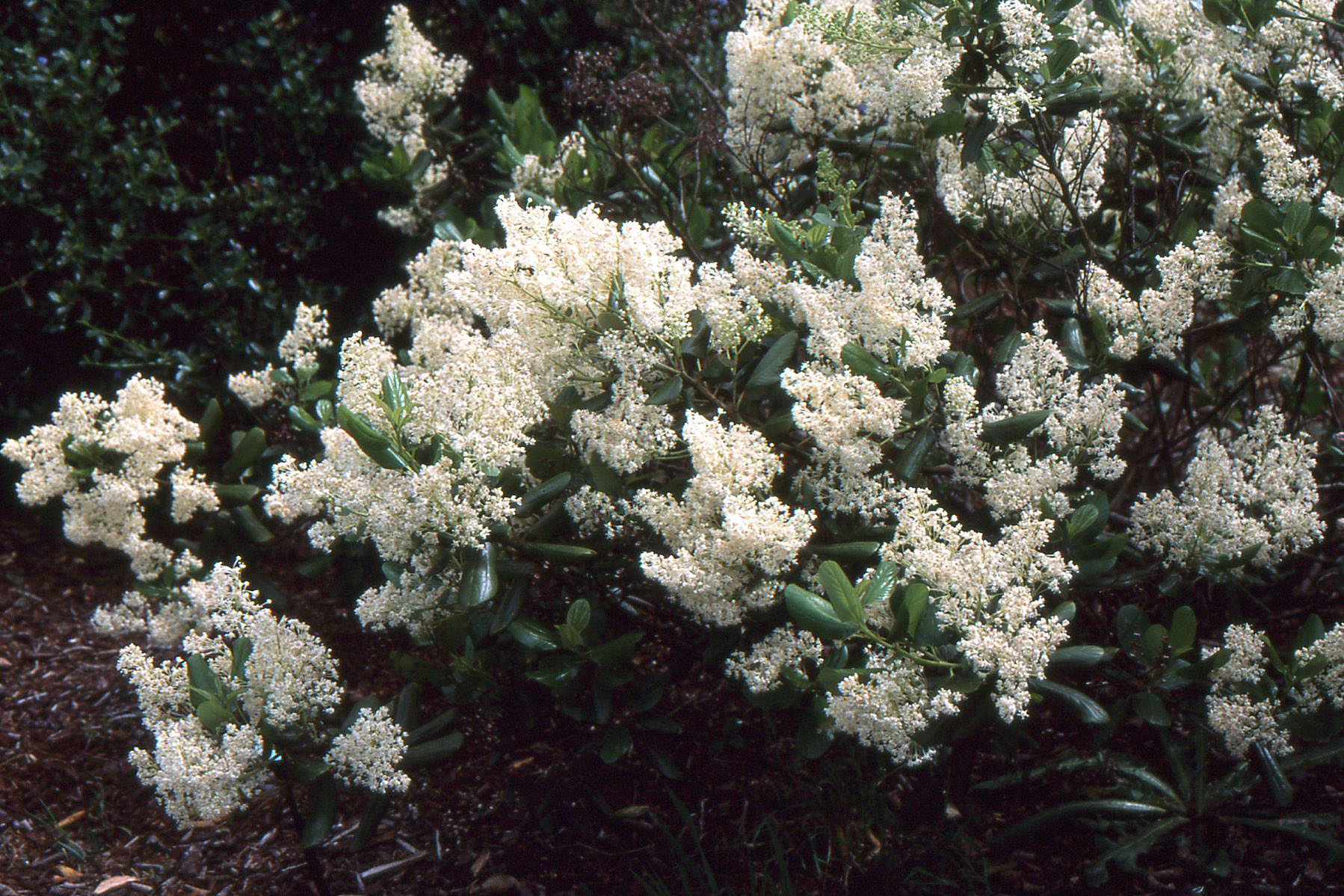Introduced Species: Butterfly Bush (Buddleia davidii)
Characteristics: Butterfly bush is a weedy perennial shrub that grows up to 4 meters (12 ft) tall. The opposite, lance-shaped leaves are greyish-green on top and white below, and reach 15-25 cm (6-10 in) in length. Conical clusters of small, fragrant, funnel-shaped flowers begin growing in June or July; they are usually purple, although red, pink, orange, yellow, and white varieties are also found.
Spread: Butterfly bush reproduces both by seed and vegetatively. Each plant can produce as many as 3 million tiny seeds, which are dispersed by water and wind. Broken stem fragments can also re-root, forming new plants. Although this plant does attract butterflies (who come to it for nectar), it cannot be used as a host plant; in fact, it displaces native vegetation that butterflies use for reproduction. Native to China, butterfly bush is aggressively invasive in natural areas in the Pacific Northwest (particularly riverbanks and other frequently disturbed habitats). It has been listed as a noxious weed here for several years; it was placed on the quarantine list earlier a few years ago, making it illegal to propagate, buy or sell the plant in Oregon.
Control: Butterfly bush is best controlled early (within two years of establishment), while it can still be pulled by hand. Large plants can be dug up with considerable effort, or cut and stump-treated with an appropriate herbicide. Dead-heading of flower clusters before seeds can mature will help limit the spread of this species.
Native Replacement: Snowbrush (Ceanothus velutinus) is a tall, evergreen native shrub with clusters of white flowers that would make an excellent replacement for butterfly bush. Red flowering currant (Ribes sanguineum) is another attractive native that will draw hummingbirds and butterflies.


